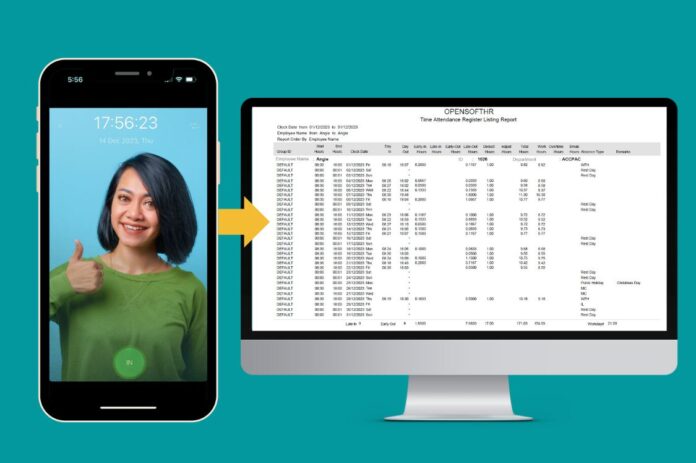In the dynamic landscape of modern workplaces, effective management of employee attendance is crucial for maintaining productivity and ensuring a harmonious work environment. Time attendance reports serve as invaluable tools, offering insights into various aspects of employee attendance.
In this article, I will delve into some commonly used time attendance reports in Singapore and will also share the benefits of these reports.
Benefits of Time Attendance Reports
Time attendance reports play a pivotal role in streamlining workforce operations and financial accuracy. They offer:
- Efficient Workforce Management: Ensuring optimal staffing levels for enhanced productivity and coverage.
- Accurate Payroll Processing: Calculating wages precisely based on actual hours worked, reducing errors and disputes.
- Compliance: Facilitating adherence to labor laws by providing transparent records of working hours, breaks, and overtime.
- Productivity Analysis: Identifying trends to make informed decisions for improved overall efficiency.
- Cost Control: Identifying areas impacting the budget, such as excessive overtime or labor costs.
- Employee Accountability: Encouraging punctuality and accountability through monitoring attendance.
- Resource Planning: Offering insights into peak work hours for strategic resource planning.
- Attendance Policy Enforcement: Ensuring consistency and fairness in enforcing company attendance policies.
Commonly Used Time Attendance Reports in Singapore
-
Overtime Analysis Report
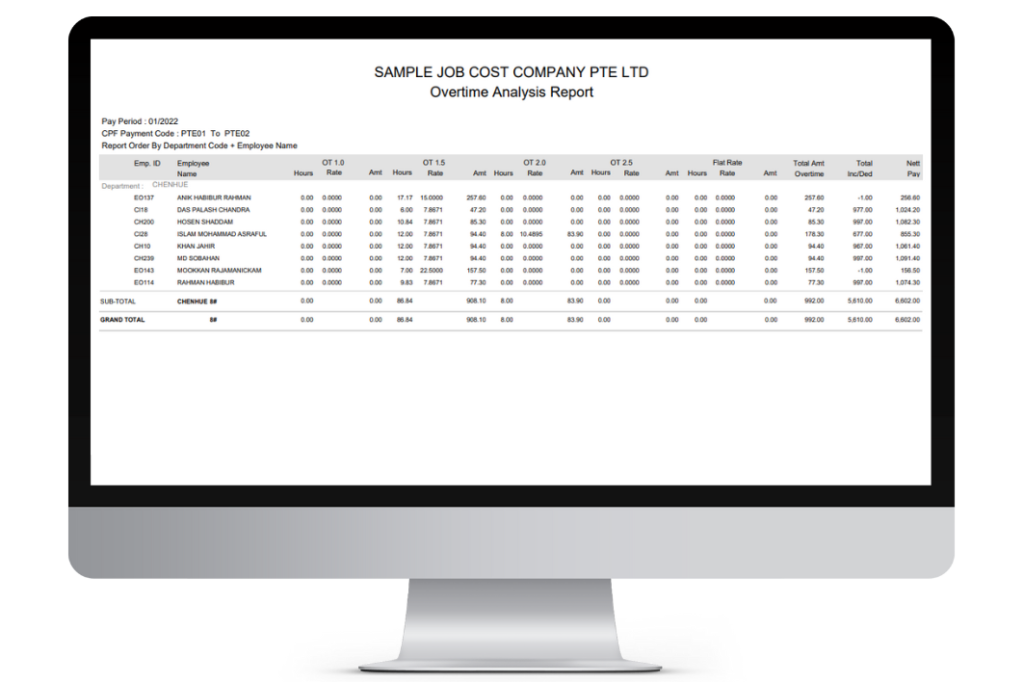
An overtime analysis report delves into the detailed examination of overtime worked by employees within a specified timeframe. An overtime analysis report will be useful in providing actionable insights that you can reference to improve employee efficiency, manage employee workload and improve employee well-being.
Here are the items that an overtime analysis report usually consists of:
- Employee Details: Identification of employees working overtime.
- Overtime Hours: Breakdown of overtime hours worked by each employee.
- Reasons for Overtime: Categorization of reasons necessitating overtime.
- Overtime Costs: Calculation of the financial impact, considering additional pay rates.
- Overtime Trends: Analysis of patterns in overtime usage for informed staffing decisions.
- Departmental or Team Breakdown: Specifics if overtime analysis is done by department or team.
- Compliance with Policies: Verification of adherence to company policies regarding overtime.
2. Monthly Lateness Report
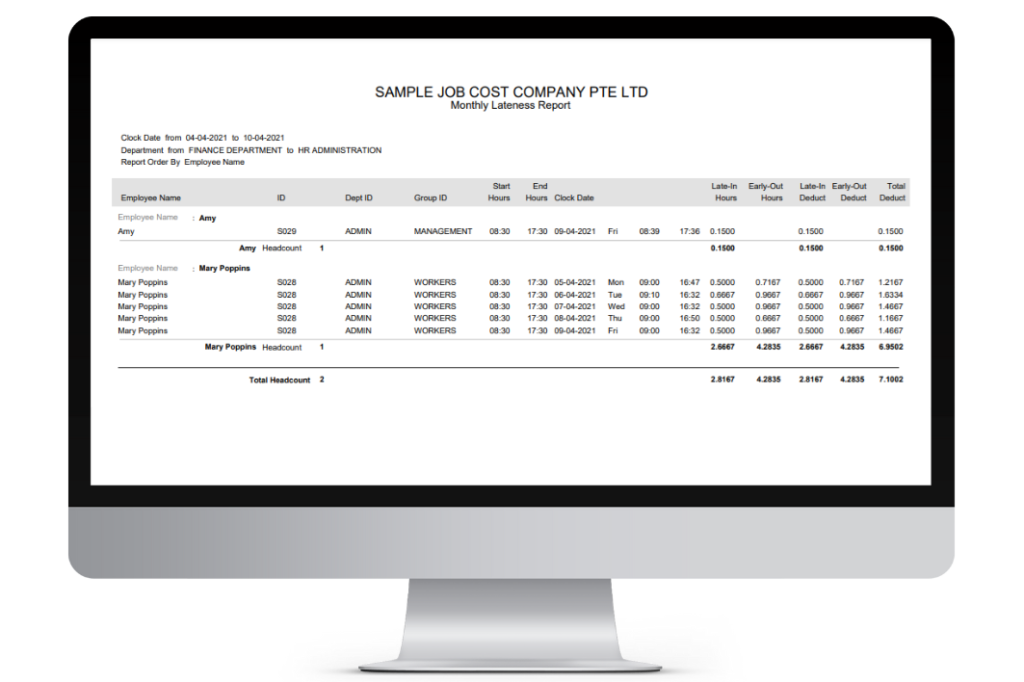
A monthly lateness report focuses on instances of employee tardiness during a specific month. With a monthly lateness report, better address attendance issues based on concrete black-and-white data, enforce punctuality policies, and foster a culture of accountability among employees.
Here are the items that a Monthly Lateness Report usually consists of:
- Employee Details: Identification of employees arriving late.
- Number of Late Arrivals: A count of occurrences of late arrivals for each employee.
- Total Lateness Hours: Cumulative time employees were late, expressed in hours or minutes.
- Patterns or Trends: Analysis of recurring lateness patterns.
- Reasons for Lateness: Brief descriptions of reasons provided by employees for tardiness.
- Consequences or Actions Taken: Notation of disciplinary actions or interventions implemented.
- Comparison with Previous Months: Comparative analysis with lateness data from previous months.
3. Absentees Listing Report
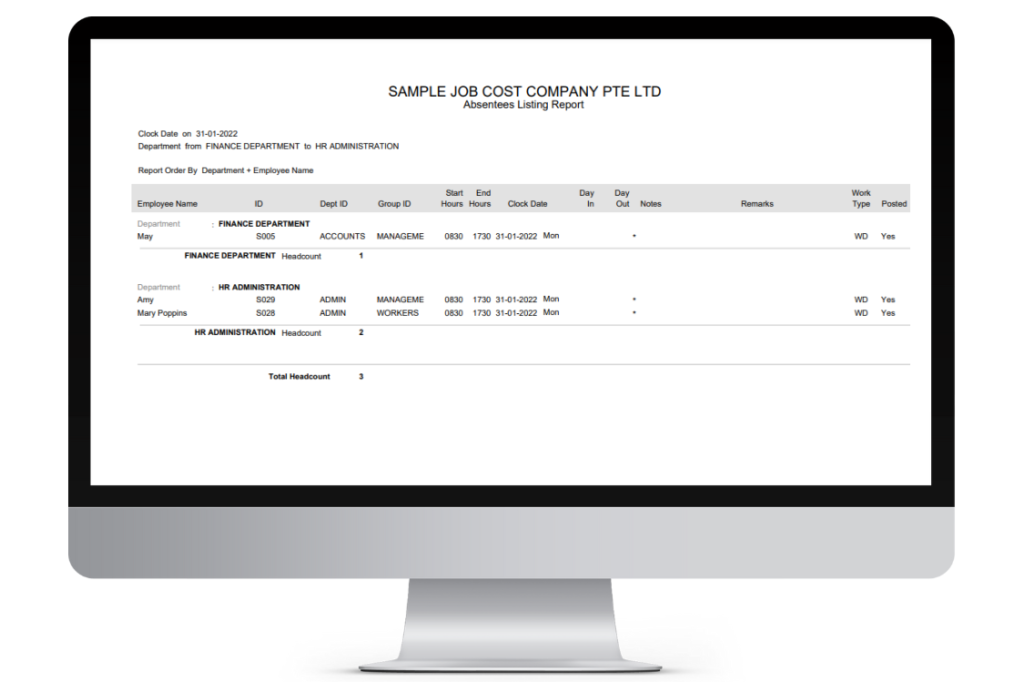
An absentees listing report provides a comprehensive list of employees absent from work during a specific period. With an Absentees Listing Report, you can identify patterns of absenteeism, address potential issues, and implement strategies to improve attendance, maintaining transparency and compliance with attendance policies.
Here are the items that an Absentees Listing Report usually consists of:
- Employee Details: Identification of absent employees.
- Dates of Absence: Record of specific dates on which each employee was absent.
- Reasons for Absence: Brief descriptions of reasons provided by employees for their absence.
- Total Absence Hours or Days: Cumulative time employees were absent, expressed in hours or days.
- Patterns or Trends: Analysis of recurring patterns or trends in absenteeism.
- Impact on Workload: Evaluation of the impact of absenteeism on overall workload and productivity.
- Consequences or Actions Taken: Notation of disciplinary actions or interventions implemented.
4. Time Attendance Register Listing Report
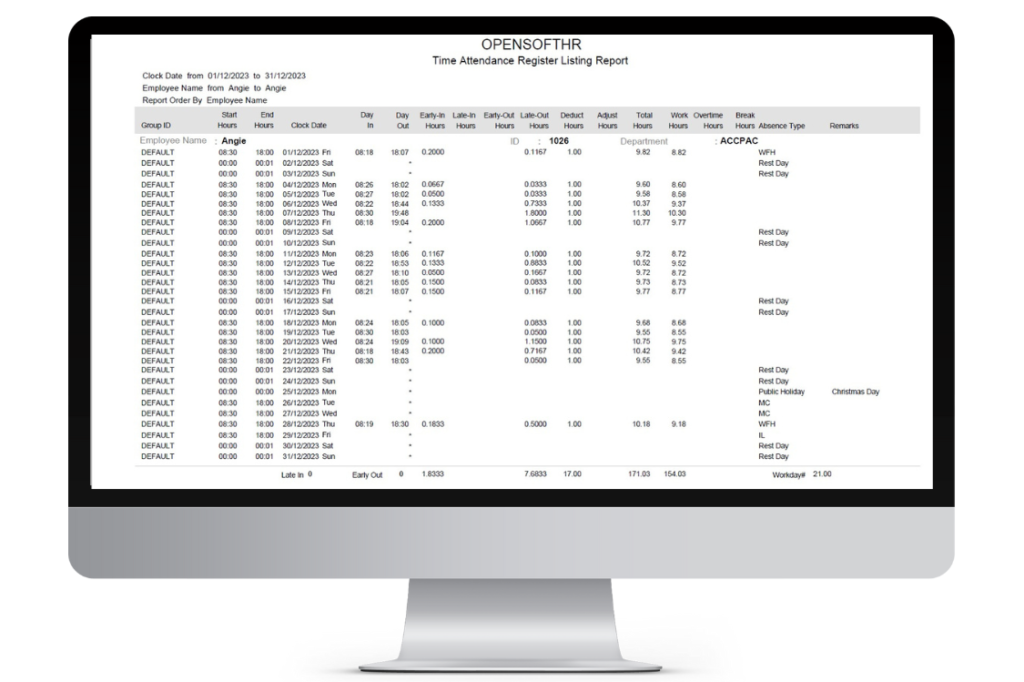
- Employee Details:
- Names or identification of employees for whom attendance is being recorded.
- Dates:
- Specific dates within the designated timeframe for which attendance is tracked.
- Clock-In/Out Times:
- Records of the times when employees clock in at the beginning of their workday and clock out at the end.
- Total Hours Worked:
- Calculation of the total hours each employee has worked during the recorded period.
- Break or Meal Periods:
- Information on any breaks or meal periods taken by employees, if applicable.
- Overtime Hours (if applicable):
- Details on any overtime hours worked beyond the regular working hours.
- Attendance Patterns:
- Insights into attendance patterns, such as consistent punctuality or recurring tardiness.
- Leave or Absence Records:
- Indication of any approved leaves or absences during the specified timeframe.
- Shift Information (if applicable):
- Details about different shifts if the organization operates on a shift-based schedule.
- Total Attendance Hours:
- Summation of all attendance hours for each employee during the reporting period.
Conclusion:
In conclusion, the various types of time attendance reports contribute significantly to better workforce management, financial accuracy, and operational efficiency within organizations. By leveraging these insights, businesses can create a more productive and accountable work environment, ensuring sustained success in today’s competitive landscape.
Get A Free OpensoftHR Time Attendance Software Demo
I hope that this article has been useful for you in understanding more about Time Attendance reporting in Singapore. The downside about doing Time Attendance Reporting manually is that it can be very time-consuming if you were to have to manually create reports based on punch cards or written employee clock in and out. There is also a very high chance that it will not be accurate.
Good news is that with OpensoftHR Time Attendance Software, you can automate your entire Time Attendance Reporting Process. You can even sync your time attendance software with your payroll, providing you with a seamless HR operations experience, saving you loads of time in the long run. Reach out to us for a free demo to find out more.
 Home
Home
